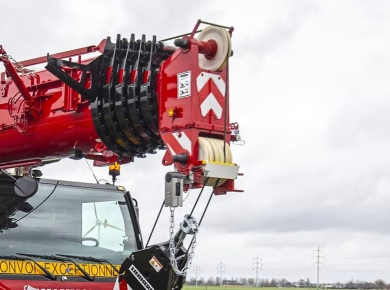Well drilling in rural Texas presents a complex intersection of choices that directly influence both water quality and quantity. For many rural families and communities, access to clean and abundant water is not just a convenience; it’s essential for life. As the demand for water grows due to population increases and agricultural needs, understanding the factors that affect well drilling becomes increasingly vital. This article delves into the depth decisions that shape water quality and quantity, offering insights for those considering or engaging in well drilling.
The Importance of Well Depth
When it comes to well drilling, depth is perhaps the most critical factor. The depth at which a well is drilled can significantly influence the quality and quantity of water available. Generally, deeper wells tap into aquifers that are less susceptible to surface contamination, but they may also come with their own set of challenges.
Shallow wells may offer a quicker and cheaper option, but they often run the risk of contamination from surface activities. This includes runoff from agricultural land, septic systems, and even nearby industrial activities. As a result, the water quality from shallow wells can fluctuate dramatically, especially after heavy rains or droughts.
Conversely, deeper wells can be more stable and provide cleaner water. However, the cost of drilling deeper can be prohibitive for some homeowners. Therefore, understanding the local geology is essential. Different regions of Texas have varying geological formations, and knowing how these formations affect water availability can help guide the decision-making process.
Geological Considerations
Texas is a vast state with diverse geological features. The geology of an area dictates not only the depth at which water can be found but also the quality of that water. For instance, the Edwards Aquifer, which stretches through central Texas, is known for its high water quality and quantity. However, other areas may have more challenging geological conditions that complicate drilling.
Understanding local geology involves more than looking at maps; it requires local expertise. Consulting with geological surveys or local well drillers can provide insights into the best practices for drilling in your region. In some instances, test wells may be drilled to assess the water quality and quantity before a full-scale drilling operation begins. These preliminary steps can save time and resources, ensuring that the final well meets the user’s needs.
Water Quality: The Hidden Costs
It’s easy to overlook the importance of water quality when considering drilling. Many homeowners focus primarily on the quantity of water available, but the quality is just as crucial, if not more so. Contaminants such as nitrates, heavy metals, and bacteria can severely impact health and well-being.
Regular water testing should be a part of any well maintenance routine. Testing can reveal potential problems before they become significant issues. Many local health departments offer resources for water testing, or homeowners can purchase DIY testing kits. The results can guide treatment options, whether that involves installing a filtration system or drilling deeper to access cleaner water.
Another key consideration is the potential for mineral content in the water. High levels of iron or sulfur can affect not just taste but also the usability of water for household purposes. In some cases, the presence of certain minerals can lead to costly repairs or replacements of plumbing fixtures and appliances. Therefore, evaluating the mineral content before drilling can save homeowners from future headaches.
Quantity vs. Quality: Finding A Balance
Finding the right balance between water quantity and quality is often a challenge. Some may prioritize the sheer volume of water available, especially if they rely on it for irrigation or livestock. Others may be more concerned with ensuring the water is safe for drinking and cooking.
One way to approach this balance is through strategic planning. Understanding your water needs based on consumption and usage can help determine the necessary well depth and drilling approach. For example, a family that uses water primarily for domestic purposes may prioritize quality over quantity, while a farmer may require a well that delivers a substantial volume of water.
Another option is to consider dual-source systems. In these systems, a shallow well provides water for irrigation while a deeper well supplies drinking water. This strategy can maximize both quality and quantity, allowing homeowners to tailor their water usage to different needs.
Regulations and Permits
Navigating the regulatory landscape is another crucial aspect of well drilling in Texas. Various state and local regulations govern well construction and water usage, and understanding these rules can save homeowners from legal complications down the line.
Before drilling, it’s essential to obtain the necessary permits. Regulations may vary based on the county, and some areas may have strict rules regarding drilling depths, well construction, and water usage. Consulting local authorities or a knowledgeable well driller can help clarify these requirements.
Additionally, understanding the groundwater rights in Texas is essential. Water rights can be complex and sometimes contentious, especially in areas where water may be limited. Being informed about your rights can help prevent disputes and ensure that you can use the water from your well as intended.
Cost Considerations
The cost of well drilling can vary widely based on several factors, including depth, location, and the complexity of the drilling process. Homeowners should budget not only for the initial drilling but also for ongoing maintenance and potential water treatment systems.
As previously mentioned, deeper wells tend to be more expensive to drill. However, they may also require less maintenance over time due to improved water quality. It’s essential to conduct a cost-benefit analysis to determine the best option for your situation.
Additionally, consider the long-term implications of water use. Factors such as drought conditions can impact the availability of groundwater, which may necessitate further drilling or other measures down the line. Investing in a well that meets both current and future needs can be a sound financial decision.
Long-Term Maintenance and Care
Once a well is drilled, the work isn’t over. Long-term maintenance is crucial to ensuring a reliable water supply. Regular inspections of the well structure, along with periodic water testing, should be part of any homeowner’s routine.
It’s also essential to maintain the area around the wellhead. Keeping the vicinity clear of debris, chemicals, or potential contaminants can help protect the water source. Homeowners should also be aware of any potential changes in land use in the surrounding area that could affect water quality.
In addition, staying informed about local water conservation practices can help maximize the sustainability of your well. Techniques such as rainwater harvesting or drip irrigation can reduce reliance on well water, ensuring that the aquifer remains healthy for years to come.
Conclusion: Making Informed Decisions
Well drilling in rural Texas is not just about finding water; it’s about making informed choices that impact both quality and quantity. Understanding the complexities involved—ranging from local geology to regulatory requirements—can empower homeowners and communities to make decisions that best suit their needs.
Whether you’re a new homeowner seeking to drill your first well or a seasoned farmer looking to optimize your water supply, the key is to remain engaged and informed. Engaging local experts, conducting thorough research, and planning for the long-term can ensure that your well serves you well—literally and figuratively. As the landscape of water use in Texas continues to evolve, being proactive is the best strategy for securing this precious resource.


